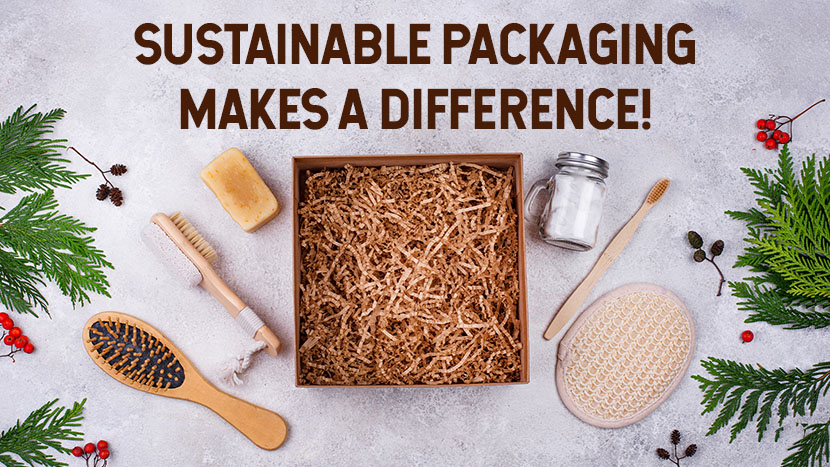Designing Tomorrow: The Art and Science of Sustainable Packaging
Are you skeptical about the possibility of creating sustainable packaging that balances both art and science? Well, get ready to be pleasantly surprised. In “Designing Tomorrow: The Art and Science of Sustainable Packaging,” we explore the innovative world of packaging design that not only looks visually appealing but also prioritizes environmental responsibility.
This comprehensive guide uncovers the importance of sustainable packaging, delving into the use of innovative materials and design techniques. We also examine how packaging solutions can reduce waste and explore biodegradable alternatives. By meeting consumer demand for eco-friendly products, we are shaping a sustainable future for packaging design. Get ready to be inspired and amazed by the possibilities of sustainable packaging.
The Importance of Sustainable Packaging
You should understand the significance of using sustainable packaging in order to contribute to a more environmentally responsible future. Sustainable packaging refers to materials and design strategies that minimize the negative impact on the environment throughout the entire lifecycle of a product. By opting for sustainable packaging, you are actively participating in the reduction of waste, energy consumption, and pollution.
One of the key benefits of sustainable packaging is its positive effect on natural resources. Traditional packaging often relies on materials such as plastic and Styrofoam, which are derived from non-renewable resources and take hundreds of years to decompose. In contrast, sustainable packaging utilizes renewable resources like biodegradable materials, recycled paper, and plant-based plastics. Choosing these materials helps conserve natural resources and reduces the strain on the environment.
Furthermore, sustainable packaging contributes to the reduction of greenhouse gas emissions. The production and disposal of traditional packaging materials release significant amounts of carbon dioxide and other harmful gases into the atmosphere. Sustainable packaging, on the other hand, utilizes more energy-efficient manufacturing processes and materials that have a lower carbon footprint. By adopting sustainable packaging practices, you are actively working towards combating climate change and preserving the planet for future generations.
Innovative Materials and Design Techniques
To create sustainable packaging, start by exploring the use of innovative materials and design techniques. The traditional materials used in packaging, such as plastic and Styrofoam, have detrimental effects on the environment due to their non-biodegradable nature. However, there are now alternative materials available that are both eco-friendly and functional. For example, bioplastics made from renewable resources, such as cornstarch or sugarcane, are gaining popularity as they can decompose naturally, reducing waste and pollution. Similarly, innovative design techniques can also contribute to sustainable packaging.
By optimizing the shape and size of packaging, companies can minimize material usage, reduce transportation costs, and lessen the environmental impact. Additionally, incorporating reusable features, such as resealable closures or detachable components, can prolong the lifespan of packaging and reduce the need for single-use alternatives. Furthermore, advancements in printing technology enable the use of water-based inks and low-VOC coatings, making packaging more eco-friendly. By embracing these innovative materials and design techniques, companies can create sustainable packaging that not only protects products but also contributes to the preservation of our planet.
Reducing Waste in Packaging Solutions
Incorporate efficient disposal methods to minimize waste in your packaging solutions. By implementing effective waste management strategies, you can significantly reduce the amount of packaging material that ends up in landfills. One way to achieve this is by using recyclable materials such as cardboard, paper, or biodegradable plastics. These materials can be easily processed and reused, reducing the overall environmental impact. Additionally, consider incorporating reusable packaging options, such as refillable containers or returnable crates, which can be used multiple times before disposal. This not only reduces waste but also provides a cost-effective solution for both businesses and consumers.
Another method to minimize waste is by optimizing the size and shape of your packaging. By designing packaging that fits the product snugly, you can reduce the amount of excess material used, resulting in less waste. Furthermore, consider using minimalistic designs that require fewer materials and utilize space efficiently. Lastly, educate your customers about proper disposal methods and the importance of recycling. Encourage them to recycle packaging materials and provide clear instructions on how to do so. By taking these steps, you can play a significant role in reducing waste and creating a more sustainable future.
Exploring Biodegradable Alternatives
By utilizing biodegradable alternatives, you can further enhance the sustainability of your packaging solutions and contribute to a healthier environment. As the global movement towards sustainability gains momentum, it is crucial to explore options that minimize the impact of packaging waste on our planet. Biodegradable alternatives are materials that have the ability to break down and decompose naturally over time, without leaving harmful residues behind.
One popular biodegradable alternative is bioplastics, which are derived from renewable sources such as cornstarch or sugarcane. These materials have similar properties to traditional plastics but are capable of breaking down into organic matter through the action of microorganisms. Another option is compostable packaging, which is designed to decompose under specific conditions, such as those found in industrial composting facilities. This type of packaging can be made from a variety of materials, including plant fibers, paper, and biodegradable plastics.
Exploring biodegradable alternatives not only reduces the amount of packaging waste sent to landfills but also reduces the demand for fossil fuels and reduces greenhouse gas emissions associated with the production and disposal of traditional plastics. By choosing biodegradable alternatives, you can align your packaging solutions with sustainable practices, contributing to a healthier environment for future generations.
Meeting Consumer Demand for Eco-Friendly Products
You can cater to the growing demand for eco-friendly products by offering sustainable packaging solutions. As consumers become more aware of the environmental impact of their purchasing decisions, they are actively seeking products that align with their values. By providing eco-friendly packaging, you can attract these conscious consumers and differentiate yourself from competitors.
One way to meet this demand is by using recyclable materials for your packaging. Opt for materials such as paper, cardboard, or glass, which can be easily recycled and have a lower impact on the environment compared to plastic or Styrofoam. Additionally, you can consider using biodegradable or compostable packaging options, which break down naturally over time and reduce waste.
Another approach is to minimize the amount of responsible packaging used. Consumers appreciate products that are not excessively packaged, as it reduces waste and shows a commitment to sustainability. Consider using minimalist designs and lightweight materials to achieve this.
Furthermore, you can engage with your customers by providing clear information about the sustainability of your packaging. Use labels or symbols that indicate the recyclability or biodegradability of your packaging materials. This transparency helps consumers make informed choices and builds trust in your brand.
Shaping a Sustainable Future for Packaging Design
Creating innovative and sustainable packaging designs plays a crucial role in shaping a more environmentally conscious future. As a consumer, you have the power to make a difference by choosing products that prioritize sustainability. Packaging design plays a major role in reducing waste and minimizing the environmental impact of products. By opting for packaging made from renewable and recyclable materials, you contribute to the conservation of natural resources and the reduction of greenhouse gas emissions.
In recent years, there has been a growing demand for sustainable packaging solutions. Companies are recognizing the importance of incorporating eco-friendly designs into their products to meet consumer expectations. This shift towards sustainable packaging has led to the development of innovative solutions such as biodegradable materials, lightweight designs, and reusable packaging options. These advancements not only reduce waste but also promote a circular economy where materials are reused and repurposed, minimizing the need for new resources.
Furthermore, sustainable packaging design goes beyond material choices. It also considers factors such as product-to-package ratio, transportation efficiency, and end-of-life management. By optimizing these aspects, packaging designers can minimize the environmental footprint of products throughout their lifecycle.


































































































